
Thirty years after the Georgofili massacre, ordered by the Cosa Nostra criminal organization, we remember this somber anniversary that shook Florence and Italy, with a story of rebirth. In 2018, thanks in part to the photographic contribution of the SCALA Archives, the 600 fragments of Bartolomeo Manfredi’s work the “Card Players” were reassembled and the work returned to the community.
On the night of May 26-27, 1993, at 1:04 a.m., Florence was shaken by a loud rumble. A car bomb exploded in via dei Georgofili, the historic center. There were 5 victims, 48 wounded, and many displaced. Among the buildings affected were Palazzo Vecchio, the Church of S. Stefano, the Torre dei Pulci (home of the Georgofili Academy), the Museum of the History of Science and Technology, the Uffizi Gallery and the Vasari Corridor. Investigations were quickly launched, it is believed that the instigators were the top leaders of Cosa Nostra, and that the episode was linked to the Rome and Milan bombs of July 1993.
The Georgofili bombing also left Florence’s art-historical heritage injured. Twenty-five percent of the works on display in the Uffizi Gallery were damaged, most of them not severely. Among those most damaged was the pair of oil paintings by Caravaggio painter Bartolomeo Manfredi: “The Concert” and “The Card Players” (1617-1618). The latter canvas was torn apart so badly that it was thought to have been destroyed forever.
We take a closer look along with Daniela Lippi, an expert restorer who worked on the painting. The restoration work was completed in 2018 and the painting was returned to the museum, remaining as a testimony of rebirth and hope as well as memory of the criminal act. The restoration was made possible thanks also to the “Culture Against Terror” fundraiser promoted in June 2017 by Corriere Fiorentino, Uffizi Galleries and Ubi Banca.
The art of conservation/restoration is complex, straddling art history, art making, and technology. How did you come to the world of restoration? Given the advancements of new diagnostic technologies and internet how has the work changed in recent decades?
I have always loved drawing and copying – ever since elementary school. I then graduated from a Florentine high school which was focused primarily on art. Upon graduation, however, I realized that a career in art did not suit me, and my thoughts turned to the world of restoration. It was 1987 and the school at the Opificio delle Pietre Dure (OPD) was closed for internal reorganization. Fortunately, I discovered the “painting restoration assistant” course at the Professional Training Center of the Tuscany Region, designed and directed by Alessandro Conti, an internationally renowned scholar who firmly believed in the need for a serious policy of maintenance of works of art, inclusive of the planning of minimal interventions aimed at proper conservation. I was 19 years old and I started there. In 1993 the OPD school reopened, I tried, but we were about 500 applicants for only 3 positions. In the meantime, after a couple of years of practice, I had begun to work seriously with firms trusted by the Soprintendenza, the Italian institutional body in charge of overseeing cultural works and issues, while today I have my own workshop.
Like other professions, restoration is a field where one cannot (or should not) feel one has “arrived”. Each work of art is unique and must be treated as such: depending on its creation technique, its conservation conditions, and its problems (intrinsic or due to external causes). Materials and methods of intervention are constantly evolving, refresher courses should be followed each year, both regarding the methods with the least environmental impact and, above all, to ensure the health of the operator. In the scientific field, evolution aims at the selection and recognition of the material to be removed, layer by layer, to operate selectively and with extreme regard to the painting’s surface and its complex layering. A painting on a movable support generally tends to be considered as two-dimensional while in reality it is composed of three-dimensional micro-layers that interact with each other: the canvas or wood support, its preparation and what was placed over it and intended to collect the paint which changes according also to the style and technological evolution of the art (from egg tempera painting, to oil, acrylic etc.). Painting techniques have changed over the centuries, and it is important to know the details. The restorer therefore tries to penetrate inside the materials and the way they were used at the time corresponding to the genesis of the artwork. Diagnostic investigations of the nondestructive type, in addition to the executive characteristics, provide much useful information for planning the most targeted intervention possible.
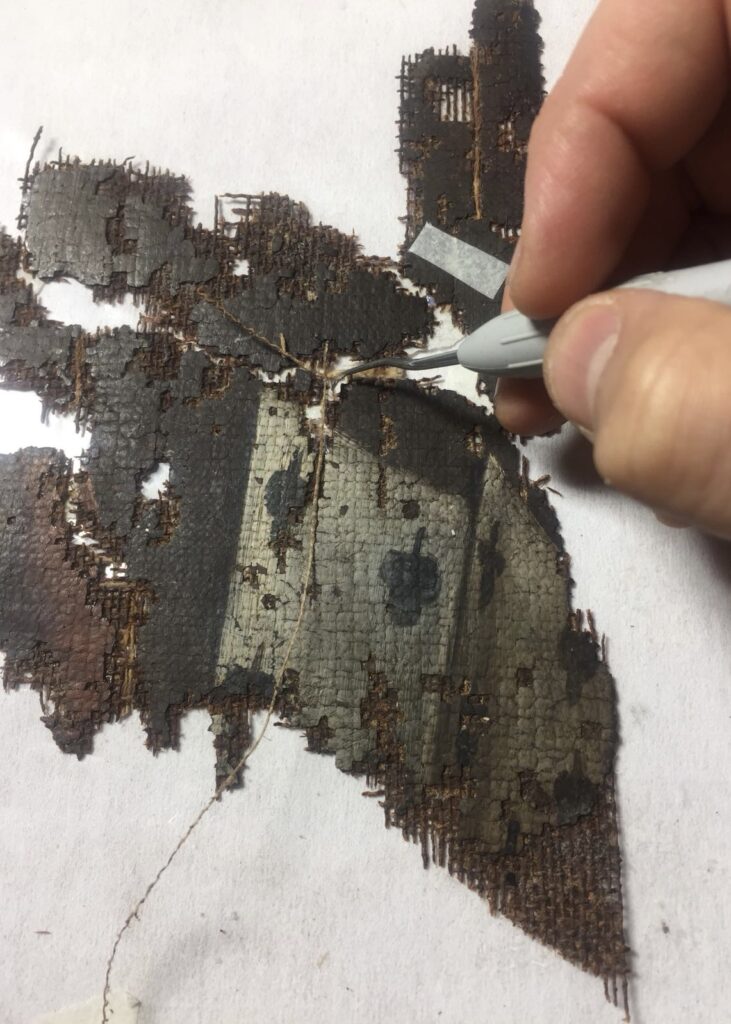
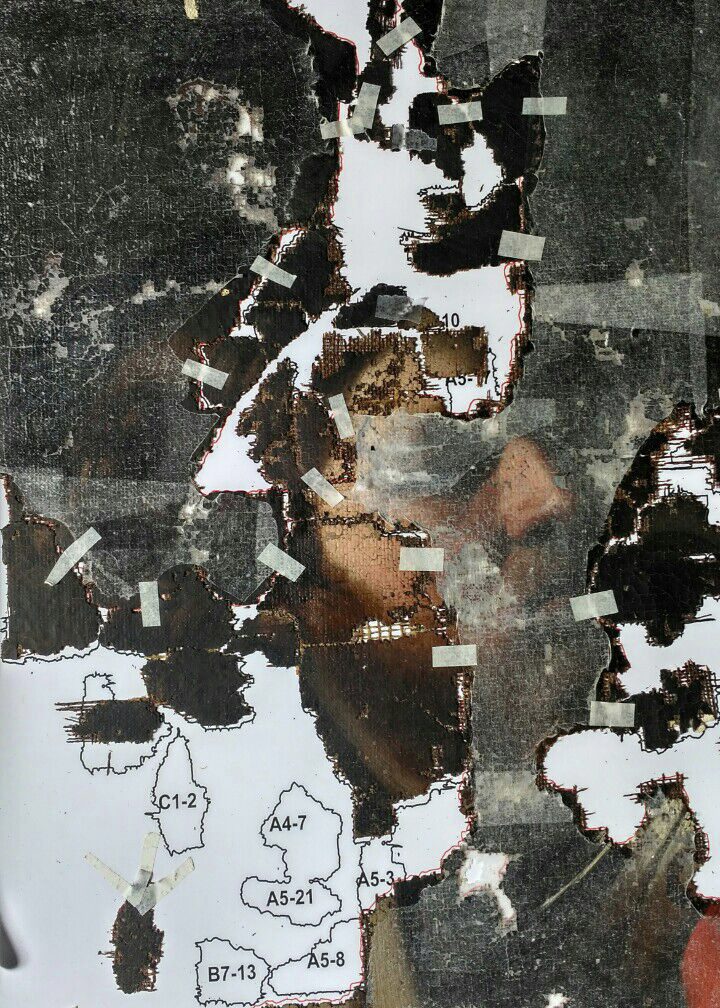
Bartolomeo Manfredi’s “Card Players” is the symbol of the Georgofili massacre. Torn apart by the explosion, it was reconstructed 25 years later as a jigsaw puzzle. What is the conservation history of this work and how did its restoration come about? Would it have been conceivable with the technical and technological resources of the 1990s?
The painting “Card Players” pendants with “The Concert,” and together they were Ferdinand II de Medici’s tribute to his wife Maria Magdalena of Austria on New Year’s Eve 1626. In fact, the painting, in addition to other numbers from later cataloguing, bears, in red, the number 1359 of the Poggio Imperiale inventory of 1695. The paper of the inventory bears the following description:
“(…) 4 canvas pictures 2 and 2/3 arms high and 3 and ½ wide painted there by the hand of Caravaggio, in one six men some playing cards, in one some playing a concert, among them a cornet and one the zither (…)” (See Card No. 8 in Caravaggio and the Caravaggesques in the Galleries of Florence, exhibition catalog edited by Evelina. Borea, Sansoni, Florence, 1970).
The painting was found in the storerooms of Palazzo Pitti in 1969 and underwent restoration along with all the other Caravaggesque paintings for the 1970 exhibition Caravaggio and the Caravaggesques in the Galleries of Florence curated by Evelina Borea. It is precisely within the catalog of that exhibition that one can find descriptions of the state of conservation of all the works on display, which, for the occasion, were subjected to restoration by the Restoration Cabinet of the Fine Arts Superintendency of Florence.
The “Card Players,” along with Bartolomeo Manfredi’s other works, was then relocated inside the Uffizi Gallery, in the 1973 Vasarian Corridor installation curated by Luciano Berti, in the Caravaggesque room and in front of that same window, overlooking Via dei Georgofili, where the Mafia bomb caught it.
Immediately after the bombing, the Uffizi Gallery, through the work of Anna Maria Petrioli Tofani (director from 1987 to 2005) was strongly supported by the government for reconstruction and restoration, so as to send an immediate signal of rebirth to the violence suffered. Work was carried out on a very large number of works, except for two that were considered irrecoverable: the “Card Players” by Bartolomeo Manfredi and the “Adoration of the Shepherds” by Gerard Van Honthorst (Gherardo delle Notti). The “Adoration of the Shepherds” was restored in 2003 by Lucia Dori, ten years after the assassination attempt, while it was not until 2014 that the planning for the restoration of the Card Players began. I was at the Gallery’s storage rooms for an inspection when I came across the work and what was left of it. The work, veiled on the frame, had been placed in the entrance hall and on the table lay the envelope containing all the painting’s fragments collected from the floor. Among them the fragment with the playing cards stood out. Somehow the identifying element of the represented subject had survived, but the fragments of painted canvas would become dust if left in that envelope. I thought that through my work I could contribute, in a small way, to saving a record of that dramatic event. Taking advantage of the opportunity to participate in the Friends of Florence Prize at the Florence Restoration Fair, I asked to elaborate a course of action for the project from Antonio Natali, director of the Gallery from 2006 to 2016, and with the support of Francesca de Luca then director of the related department permission was granted. The project became concrete with the Crowdfunding launched by Corriere Fiorentino and Uffizi Galleries, director Schmidt, and with UBI Banca in 2017/2018.
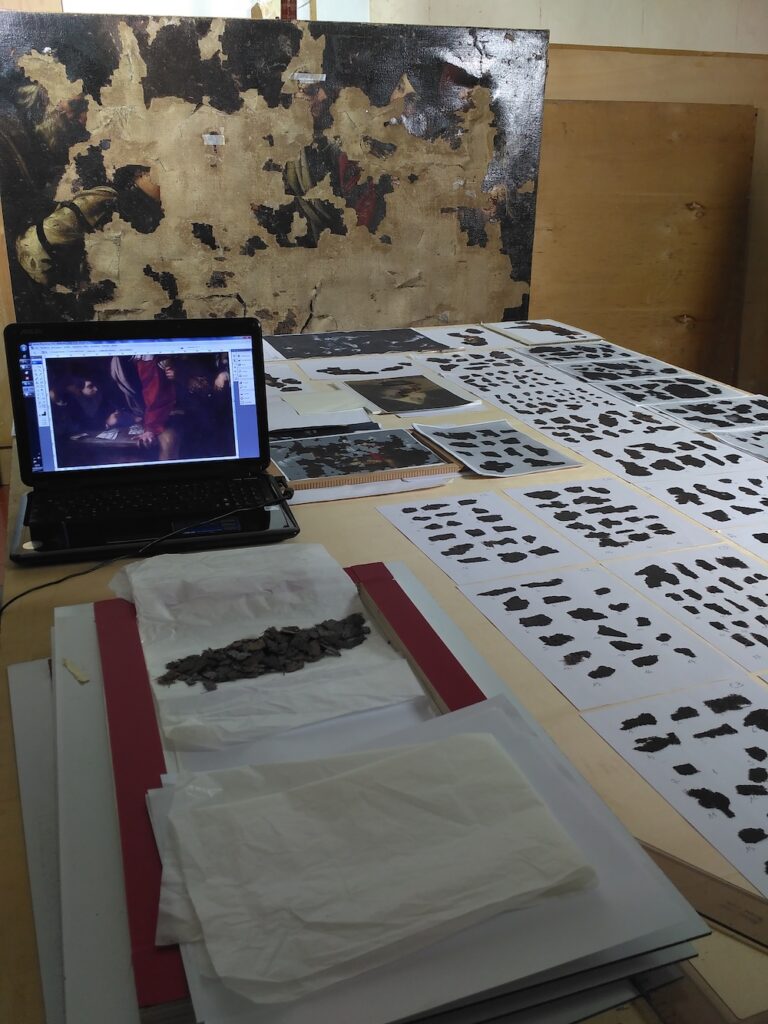
All existing photographic documentation was a source of information about the work’s appearance: at the Uffizi Photographic department all the material was in black and white -with full print and negative, documenting the work after the 1970 restoration as well as in its veiled state after the 1993 attack; in the archives of the Opificio delle Pietre Dure, which keeps records of restorations from 1900 to the present, there were transparencies/photocolors of details taken during the cleaning and plastering phases also related to the 1970 restoration. But then I found online your color image, a shot dating back to 1988, thus gaining 18 years! Allowing to observe its state of preservation but especially the details of the painted subjects, such as the richly decorated sleeve of the gambler betting.
Having the color reference was essential in order to obtain an immediate subdivision of the fragments and be able to relocate them exactly, even with the difficulty of the many dark colors not perfectly distinguishable in tone. Additional factors played an important role in finding the correct position of the fragments, among them the evidence of the craquelure of the aging paint, which is considered a kind of fingerprint of each background. And with the work on photo-retouching programs performed by Emiliano Vatteroni (a friend who is an expert in digital graphics, as well as the first person I approached in 2014 before proposing the project to the Uffizi management), it was possible to superimpose to scale the individual fragments on the lattice of the craquelure highlighted by the lighting used at the time of the SCALA photo shoot and subsequent transparency/photocolor.
At first we thought of photographing the individual fragments one by one, then, given their medium-small size, we realized that it would be possible to scan the fragments placed on an A4 sheet and cataloged by alpha-numeric code. To reduce the search area we superimposed the Scala photo with that of what was left on the frame, the resulting image became the working plan for the actual relocation. Along with the restoration card we also handed over the digital map of the reassembly performed. The final count saw 615 catalogued fragments, of which nearly two hundred fragments did not find a position because they were too small and impossible to clean and treat like the others, and would risk being destroyed in the attempt. These latter fragment were glued onto two panels and placed inside a specially made folder that was placed on the back of the painting by anchoring it to the frame. In the future they could be used to further analyze Manfredi’s painting. I would like to state that the design and operational stages in the realization of the new support would not have been possible without the dynamic collaboration of my colleague Lorenzo Conti and the valuable advice of Luciano Sostegni, one of the most famous Florentine restorers who is an expert on textile supports.
In the case of the “Card Players,” whose pictorial material was lacerated by the explosion, it was possible to carry out a large number of stratigraphic samplings, subjected to optical microscopy in visible and ultraviolet light and scanning electron microscope analysis, which revealed the elemental composition of the various layers. An exceptional case, since destructive investigations are generally the last to be considered and only if other types of nondestructive investigations are not sufficient to clarify certain information. This work was performed by Susanna Bracci with Donata Magrini of the National Research Council (NRC). Susanna is no longer with us today, but she was very passionate about this work on The Card Players and fully felt the social and historic power that such a recovery entailed. The work thus recovered is not brought back to an intact state but has become a document, a memory and warning of that terrible affront.
Of course, the technology so widely used today played a key role in our restoration, a role that was not available in the years immediately following the bombing. In fact, the restoration of the Concert was carried out between 1994 and 1995, and the restorers Freschi and Mac Gregor used the existing photograph at the Uffizi Photographic Cabinet, printed at full size in order to properly reassemble the detached fragments, in that case larger in size than those of the Players.
Archival photographs are fundamental and valuable elements in any case because they “stop” in a snapshot the conservation moment, and above all, they prove irreplaceable when the works suffer catastrophic traumas such as the one in Florence or the various earthquakes that have damaged much of the territorial cultural heritage (from Assisi to the more recent events in Abruzzo, Marche and Umbria).
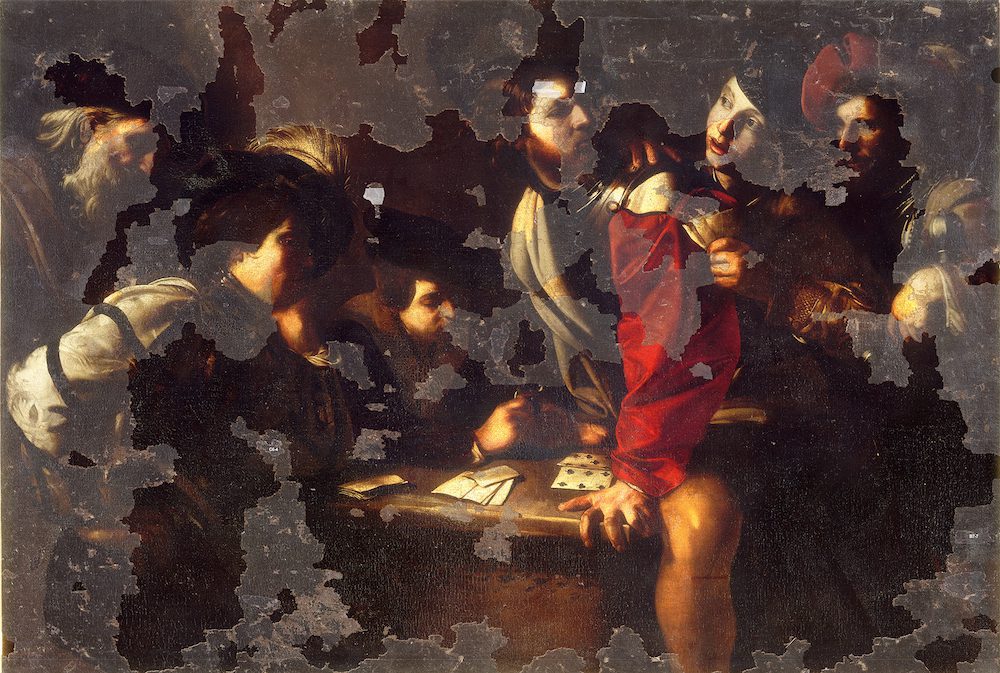
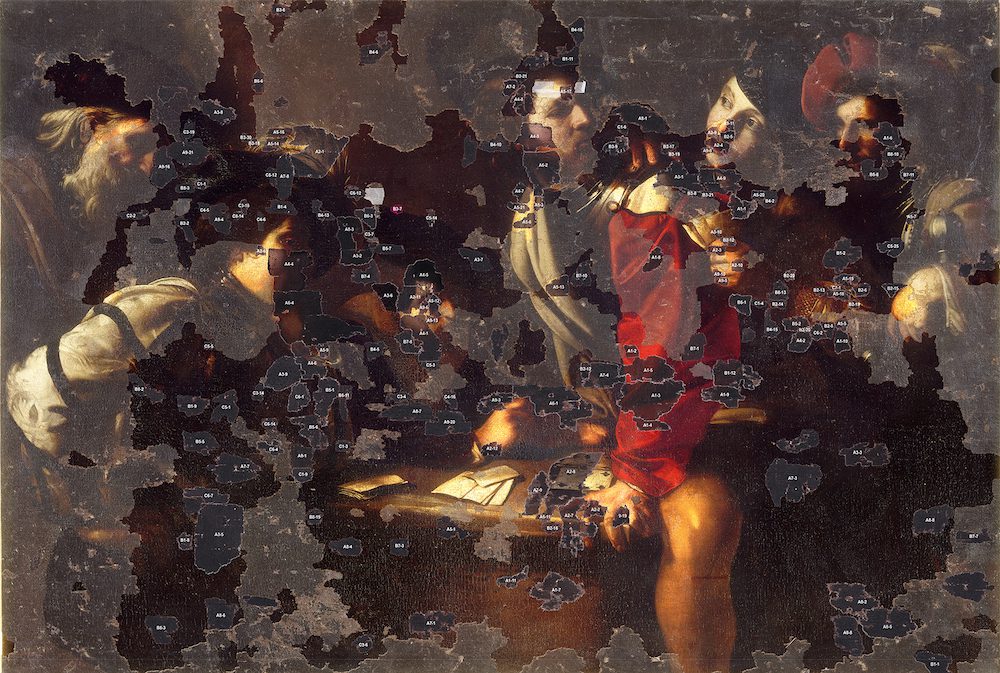
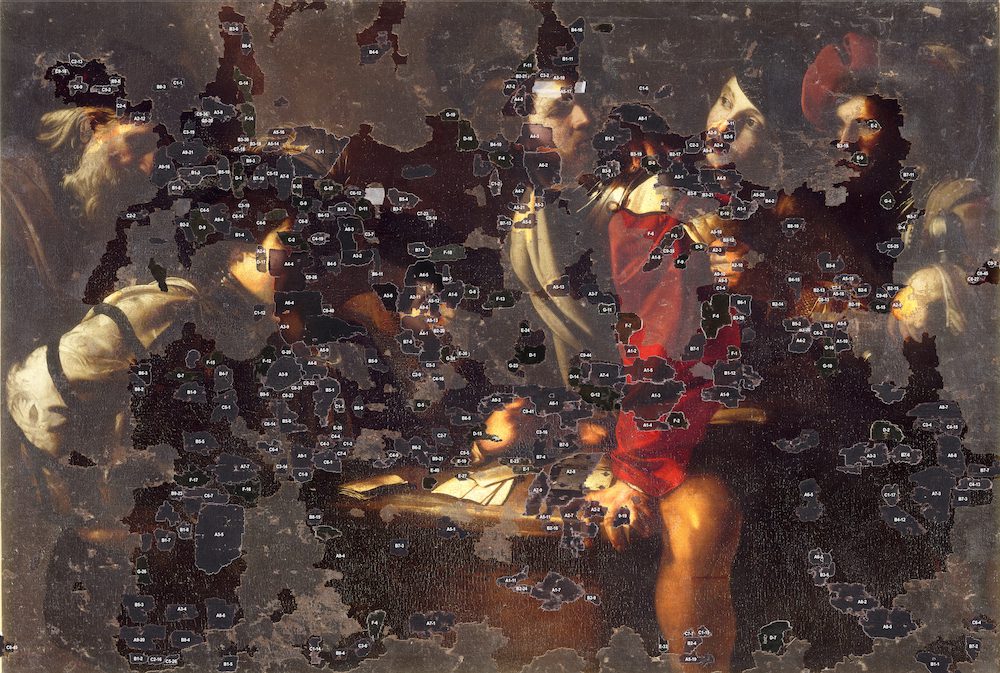
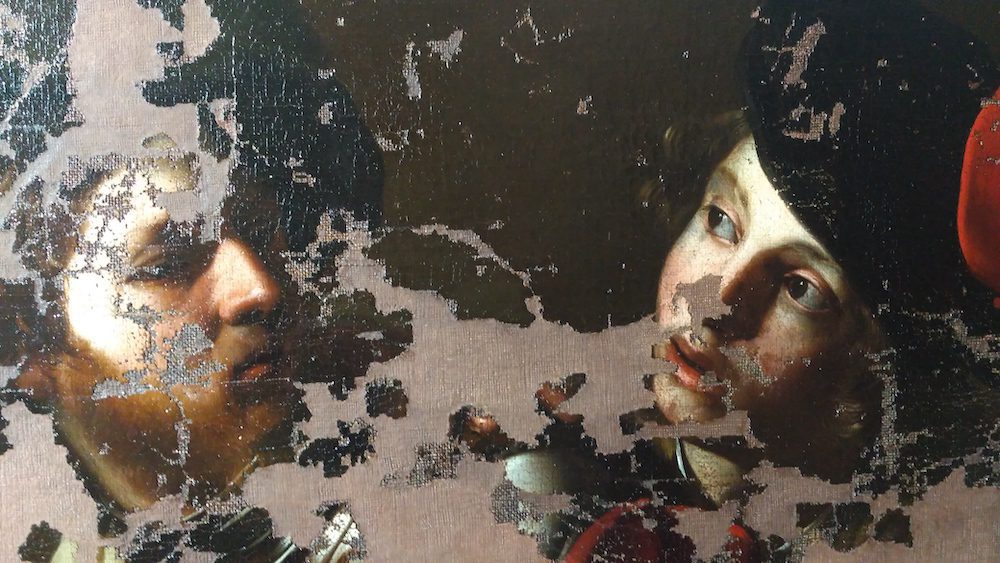
The SCALA Archives as a one-stop source for the restoration of Italian cultural property. How did you arrive at our archive and how could it be further utilized for heritage documentation and restoration activities?
Given all that I have recounted, the historical and documentary importance of such photographs is obvious.
With the advent of computer tools so widely available, historical research is much faster, immediately directing to the correct and specific area of research. Perhaps there still remain many paper archives that would need digitization, both for their use but especially for their duplication and future preservation.
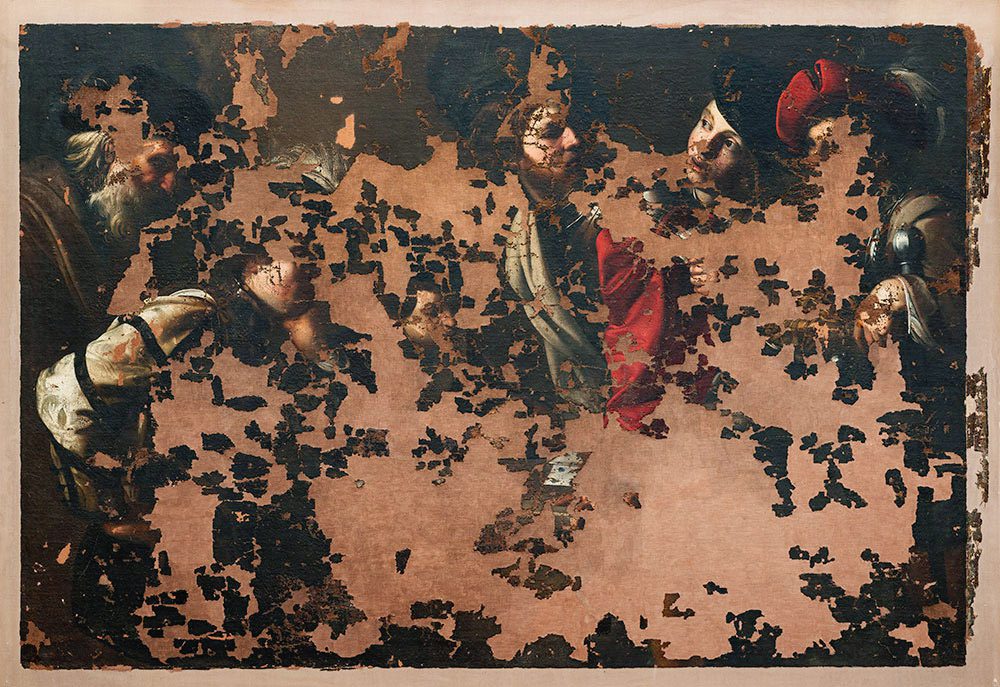
Can you think of other cases of recent restorations where photographic archives available online have been a valuable source for preliminary investigations and intervention choices?
Restorers are hungry for sources that illustrate the state of conservation of works under restoration. Both written archival sources and image sources. Just last year, for the restoration of a work by Benozzo Gozzoli, the discovery online of two images from the Zeri Photo Library that showed the work in the early twentieth century, almost completely repainted, was crucial, and through cross-referencing with mid-nineteenth-century documentary sources it was possible to infer approximately the date of repainting. The latter, however, in a later restoration had been removed, leaving traces of matter on the surface, which we were thus able to identify and document.
The SCALA Archives took part in this miracle of preservation. As Daniela Lippi mentioned, thanks to the digitization and accessibility of the archive on the Web, finding the 1:1 photographic shot of the work was a key piece in reconstructing the puzzle.
Some 70 years after its inception as SCALA – Istituto Fotografico Editoriale, the intuition of John Clark and Mario Ronchetti, supported and encouraged by renowned art historian Roberto Longhi, was confirmed. In fact, photographing in color with the utmost care to maintaining color fidelity over time and the utmost attention to capturing even details, not only gave scholars of the time the highest quality transparencies/photocolors they could use, but preserved and destined for posterity the faithful preservation of works of art
World War II, the stimulus of art-historical study also based on color (as well as line and drawing), and the technical progress of film made it possible in the 1950s to start a business based no longer on photographing works of art in black and white, but in color. The name of Scala’s archive derives precisely from the practice of affixing that color scale (Kodak Color Control Patches) next to the reproduced works that can monitor changes in film colors over time. Color scale that Scala still uses today in photographic campaigns, and that Scala’s laboratory technicians are able to manage to restore transparencies/photocolor and film.
The continuous interaction of the SCALA archives with art historians and technicians-conservators of Italy’s artistic heritage-defines in parallel to its commercial vocation that of a “storehouse of collective knowledge” and places Scala on a par with other public institutions, capable of preserving and making its content accessible.
***
Cover: Nov 25, 2017 – work table with the cataloging of fragments on A4 sheets – Courtesy Daniela Lippi